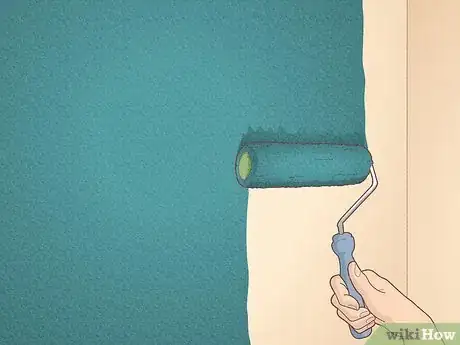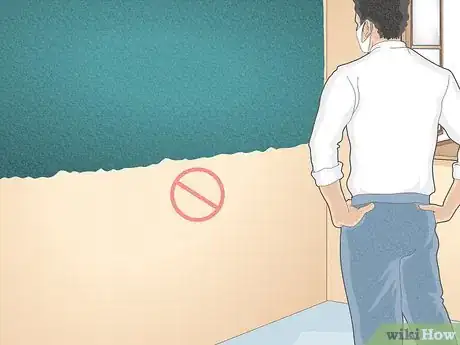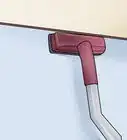This article was co-authored by wikiHow staff writer, Hannah Madden. Hannah Madden is a writer, editor, and artist currently living in Portland, Oregon. In 2018, she graduated from Portland State University with a B.S. in Environmental Studies. Hannah enjoys writing articles about conservation, sustainability, and eco-friendly products. When she isn’t writing, you can find Hannah working on hand embroidery projects and listening to music.
There are 7 references cited in this article, which can be found at the bottom of the page.
This article has been viewed 39,879 times.
Learn more...
If you’re itching to do a little DIY makeover in your home, a fresh coat of paint is the perfect place to start. Using a paint roller is the best way to coat a wall easily, but roller marks can leave your paint job looking streaky. Fortunately, there are a few things you can do to avoid roller marks for a smooth, clean finish on your walls.
Steps
Use a synthetic, short-napped roller cover.
-
Cheap roller covers can lead to streaking and paint marks. When you’re picking out your supplies, go for a 1⁄4 in (0.64 cm) synthetic, short-napped roller cover for your walls and ceiling. This roller cover doesn’t have any obvious seams, so it will apply your paint smoothly on every surface.[1] X Trustworthy Source Consumer Reports Nonprofit organization dedicated to consumer advocacy and product testing Go to source
- Longer-nap roller covers are better for textured walls.
Wipe off any lint from the paint roller.
-
Avoid splatters and spots in your paint from dust and lint. Use a vacuum or a piece of painter’s tape to clean your roller off before you use it. Even if the roller is new, it still might have a little bit of dust or dirt on it, so give it a quick wipedown before you start.[2] X Research source
- If you’re using an old roller, make sure it doesn’t have any dried paint on it that could cause lumps or bumps in your paint job.
Don’t use too much paint.
-
Too much paint can splatter and cause harsh lines. Pour your paint into a paint tray and dip your roller into the paint. Roll the roller back onto the grooves of the paint tray to squeeze out any excess before you put it on the wall.[3] X Research source
- On the flip side, too little paint can leave your paint job streaky and thin. Try to strike the balance in between too much and too little.
Roll in a “W” or “N” pattern.
-
Coat large areas of the wall easily without a ton of streaks. Move your roller up and down at a diagonal to go across your entire wall. Be sure to follow up with new paint before your last coat dries to prevent streaking.[4] X Research source
- Professional painters can paint up and down in straight lines, but it’s a little bit tougher to do. If you’re a beginner, try a W or N pattern to start.
Use moderate pressure on the roller.
-
Pressing super hard can push the paint into the wall. Instead, press the roller against the wall with moderate pressure; if the paint starts to streak or create lines, you’re probably pushing too hard.[5] X Research source
- This is a little bit objective, and it might take some practice before you find the right pressure point for your paint job.
Maintain a wet edge.
-
Every time you roll paint on the wall, overlap it on the wet paint. This will help ensure that your edges don’t look so defined. It doesn’t have to be a huge overlap—about 1 in (2.5 cm) will do just fine.[6] X Research source
- This is the easiest and best way to make sure you don’t get any streaks in your dried paint.
Paint as close to the floor and ceiling as possible.
-
Avoid harsh paint lines on the top and bottom of your wall. Try to drag your roller as close to the ceiling and floor as you possibly can without spreading paint everywhere. It will help blend the lines in between your 2 paint jobs and make your walls look seamless.[7] X Research source
- You can paint around the floor and ceiling first to make your paint job easier, or you can save it until the end.
Paint the entire wall all at once.
-
Don’t be tempted to pause in the middle and let the paint dry. Once you’ve started on a wall, it’s important to go over the entire thing to avoid roller marks. Stopping and starting in the middle of a paint job can lead to uneven drying which creates streaking.[8] X Research source
- Doing an entire wall at once ensures that you’ll keep a wet edge the whole time.
Go back over the roller marks while the paint is wet.
-
You can fix roller marks if you spot them early. Put more paint on your roller and press against the wall lightly on top of the roller marks. Go straight up and down the wall from floor to ceiling to fix the roller marks and spread the paint out.[9] X Research source
- This is also called “back rolling,” and it’s a super important part of smoothing out your paint lines.
Sand your walls if you find roller marks.
-
Noticing roller marks after the fact can be a bummer. If your paint dries and you find streaks or marks in your paint, grab a sheet of 180 or 220-grit sandpaper and use it to sand the paint streaks off the wall.[10] X Research source Wipe the walls down to get rid of the dust, then cover the entire wall in a new coat of primer and paint.[11] X Research source
- You can also sand in between coats to erase streak marks as they happen.
- Sanding also works well on paint drips or bubbles.
You Might Also Like

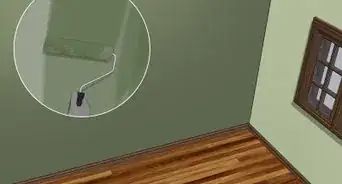
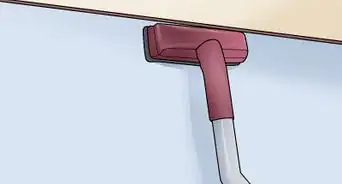



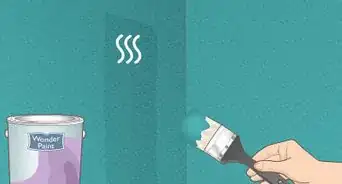


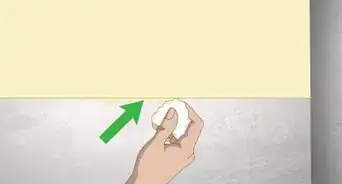



References
- ↑ https://www.consumerreports.org/interior-paints/how-to-fix-interior-painting-mistakes/
- ↑ https://www.thisoldhouse.com/painting/21017246/how-to-roll-paint-onto-a-wall
- ↑ http://reliable-remodeler.com/top-10-painting-tips-to-avoid-roller-marks/
- ↑ https://www.thisoldhouse.com/painting/21017246/how-to-roll-paint-onto-a-wall
- ↑ https://www.thisoldhouse.com/painting/21017246/how-to-roll-paint-onto-a-wall
- ↑ https://www.bobvila.com/slideshow/12-easy-fixes-for-a-botched-paint-job-49719
- ↑ http://reliable-remodeler.com/top-10-painting-tips-to-avoid-roller-marks/
- ↑ https://www.businessinsider.com/tricks-for-how-painters-get-a-perfectly-smooth-paint-job-every-time-2017-11#to-avoid-lap-marks--2
- ↑ https://www.youtube.com/watch?v=eofezT3QqRY&t=235s
About This Article






